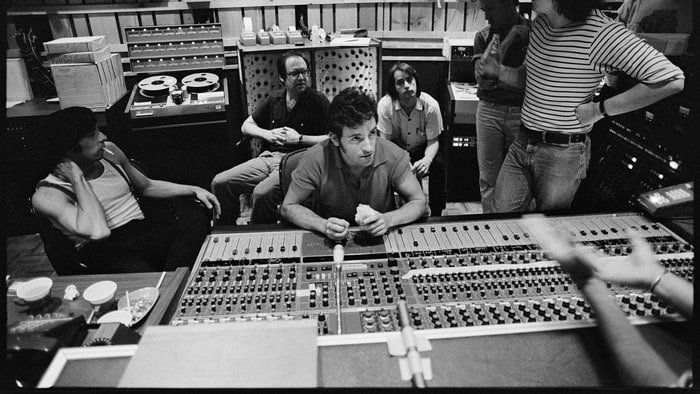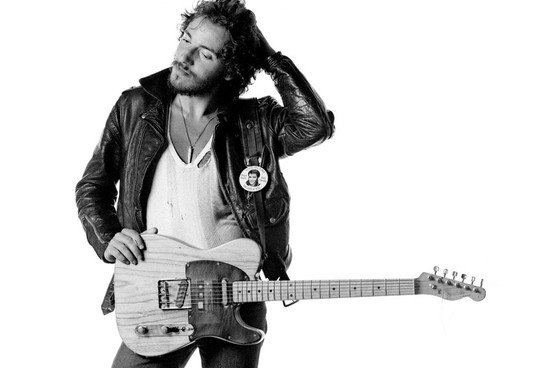Born to Run is the third album by American artist Bruce Springsteen and was released on August 25, 1975. The album was a huge success thanks to the singles Born to Run and Tenth Avenue Freeze-Out.

Writing/Recording Process

The album was almost the last effort from the singer, due to the unsuccessful albums leading up to the release of Born to Run. The project was a way to show that he had matured both musically and lyrically, stating: "the album where I left behind my adolescent definitions of love and freedom—it was the dividing line." Spingsteen also spent more time in the studio refining the sound of the record. He was highly influenced by the legendary producer Phil Spector, whom invented the production technique »Wall of Sound« - which was used in the studio to produce a dense orchestral aesthetic .
The songs were written (for the first time) only on the piano, but were later flurished with string arrangements, horns, various other instruments and vocal and guitar overdubs. Spingsteen wanted the songs on the record to sound as if Roy Orbison, Bob Dylan and Phil Spector were combined together in an album.
The record took 14 months to record in its entirety with 6 months focusing entirely on the leading song of the album - Born to Run. The process was most likely that long due to the frustrations over the recording of the song Born to Run, where Bruce heard "sounds in [his] head" that he could not explain to the others in the studio." The »others in the studio« he is referring to, is mostly pianist Roy Bittan, drummer Max Weinberg, saxophonist Clarence Clemons (whom appears on the album cover), bassist Garry Tallent and producer Jon Landau, whom replaced the role of Mike Appel.
The Lyrics

As mentioned before, the lyrics have matured on the album, and featured an interesting approach to story telling. The story was split into different parts:
The first part is made up of the songs Thunder Road and Born to Run – energetic and upliftiong songs about escape; The other part contains the songs Backstreets, Jungleland and Meeting Across the River (originally titled The Heist«), which talk about negative themes such as defeat, loss and false hope.
The original idea was that the album would begind and end on different versions of Thunder Road, which would complete the cycle of the record but was later scrapped.
The Release/Reception

Upon release, the album had a quarter million dollar promo campaign by Columbia records, which helped to propel the album in the top ten on the charts soon after the release. The producer of the record Jon Landau said »I saw rock and roll future and its name is Bruce Springsteen", a quote that was used in the campaign, which garnered much hype before the release of the record, and made critics question if Bruce Spingsteen is the real songwriter and talent of the record, or just a product of the record company to sell more albums. Spingsteen later said: "future of rock was a very big mistake and I would like to strangle the guy who thought that up."
The hype later died down and the record sales faultered, yet it remained a strong seller through the years. The album was later certified triple-platinum and is considered to be one of the best albums in the history of modern music.
In Retrospect...
Although I don’t consider myself a big Bruce Spingsteen fan, the record remains as one of my favourite albums of all time. As a musician myself, I am amazed at the sheer production quality and the arrangements of the instruments, that make my jaw drop every time I listen to the record. The record also reminds me a bit of the seminal Beach Boys record Pet Sounds, in which Brian Wilson also shows a lot of influence of Phil Spectors recording style, like Bruce on this project. If you haven’t listened to the record yet, give it a spin, you won’t be disappointed.
✅ Enjoy the vote courtesy of @themadcurator! Please consider following and casting a witness vote for @themadcurator to show your support! Just click here, it's easy!